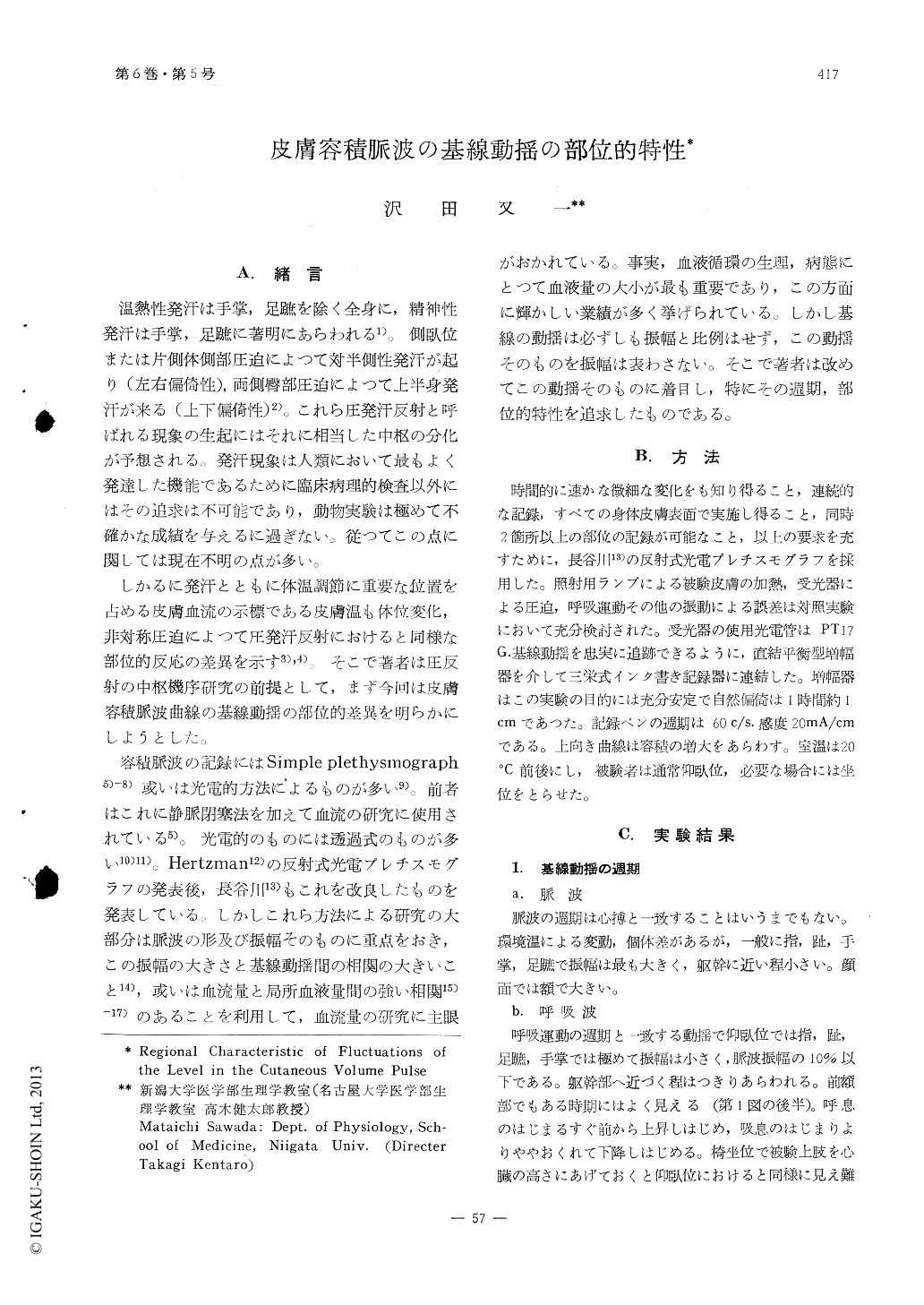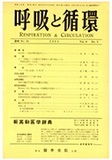Japanese
English
- 有料閲覧
- Abstract 文献概要
- 1ページ目 Look Inside
A.緒言
温熱性発汗は手掌,足蹠を除く全身に,精神性発汗は手掌,足蹠に著明にあらわれる1)。側臥位または片側体側部圧迫によつて対半側性発汗が起り(左右偏倚性),両側臀部圧迫によつて上半身発汗が来る(上下偏倚性)2)。これら圧発汗反射と呼ばれる現象の生起にはそれに相当した中枢の分化が予想される。発汗現象は人類において最もよく発達した機能であるために臨床病理的検査以外にはその追求は不可能であり,動物実験は極めて不確かな成績を与えるに過ぎない。従つてこの点に関しては現在不明の点が多い。
しかるに発汗とともに体温調節に重要な位置を占める皮膚血流の示標である皮膚温も体位変化,非対称圧迫によつて圧発汗反射におけると同様な部位的反応の差異を示す3),4)。そこで著者は圧反射の中枢機序研究の前提として,まず今回は皮膚容積脈波曲線の基線動揺の部位的差異を明らかにしようとした。
Vasomotor fluctuations in the skin were simultaneously recorded in two different regions by means of reflexion photoelectric plethysmograph with direct coupled amplifier and pen writer oscillograph in healthy subjects. There are fluctuations of four types: 1. pulse wave, 2. respiratory wave, 3. peri-odic fluctuations of 6-8 sec., 4. irregular saw-teeth shaped waves of 10-15 sec. The wave of 6-8 sec. appears spontaneously in forehead and cheek, especially during and after mental arithmetric and may be concerned to mental concentration. Saw-teeth shaped waves spontaneously appear dominantly in finger, toe, palm, and sole, especially regular and larger in light sleeping condition. This type may be essentially the same character as the vasoconstriction response to emotional stimuli. In the other bodily regions the fluctuations become smaller and more smoothy, but always concordant with finger and toe waves.
The correlation coefficients between the two parts were calculated. Any symmetrical regions in face and body usually have a large correlation coefficient. Any two regions in the face or in the body have close correlation, but there are usually no correlation between any part in face and body (Fig. 14).
(This investigation has made with the assistance of a grant from the Ministry of Education)

Copyright © 1958, Igaku-Shoin Ltd. All rights reserved.


